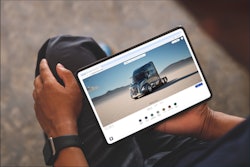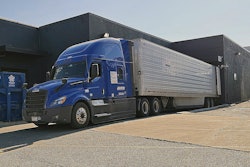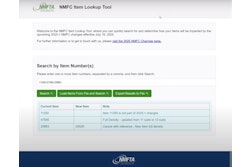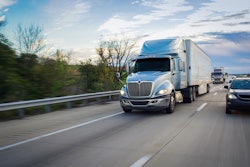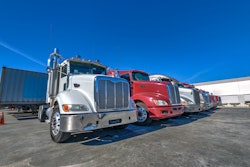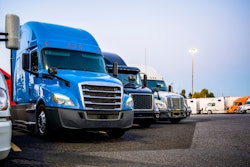What gives successful trucking fleets their competitive advantage? Technological innovation leads the way. Still, maintaining an edge in this high-risk, low-margin industry is challenging, especially during economic uncertainty.
The goal is to scale a capital-intensive business. Many technology suppliers assert their products can do this, but the history of in-cab mobile computing and communications indicates otherwise.
Many fleets are taking control of their mobile technology by replacing rigid in-cab systems with more flexible and adaptable platforms that enable them to bypass vendor product timetables and advance rapidly.
A custom app platform is one way fleets quickly create and implement new features, functions, and system integrations without delay or with the burdens and complexities of in-house software development.
The limitations of one-size-fits-all
Fleet mobility vendors have historically competed as single-source providers of in-cab computing, communications, and software. Despite offering hardware display options, many vendors corral fleet customers into a proprietary suite of electronic logging devices (ELDs), mobile apps, truck and trailer telematics, and driver and vehicle safety systems.
This centralized model strategy limits speed and innovation in your attempts to enhance the driver experience and address specific business needs. For instance, vendors that develop products for a broad industry sector, such as truckload, may overlook particular use cases for dedicated operations and fleets with other unique requirements.
Fleets often struggle to deploy new features, functions, and workflows that address their evolving business needs using mobile platforms built for the masses.
A transformation story
Like many others, one of North America's largest transportation and logistics companies used a conventional in-cab system connected to the vehicles’ Electronic Control Module (ECM) and hardwired, dash-mounted displays. The system was limited and did not provide options for out-of-cab mobility or custom driver workflows.
After selecting a new ELD and telematics system, the company paired it with an independent custom app platform that swiftly adapts to its evolving business needs. Any changes, such as a new workflow, can now be immediately synced with its back-office systems.
Building workflows that adapt
This company developed dozens of custom workflows that it shares and adapts to various customer accounts. Each has unique information and delivery tasks for drivers to complete, and the custom app walks drivers through each step.
The fleet’s custom app is tightly connected with safety, compliance, human resources, and other systems. For example, the fleet automatically deactivates drivers from receiving a dispatch if they do not have current credentials, such as an expired license or medical card, or if management needs to rectify a safety event before a driver can return to duty.
The possibilities are endless, but a few other highlights include using barcode scanning and customized forms to collect cargo information, deploying driver surveys, sending safety messages and videos, and collecting pay adjustments from drivers.
Simplifying complex operations
With a custom mobile app platform, fleets of any size can keep technology aligned with their strategic objectives rather than wait for vendor updates that may never come.
For example, a dedicated contract fleet can develop unique workflows for different freight sectors, like food and beverage, automotive, and individual customers. A few examples of how control and flexibility make it easy to scale and evolve a mobile strategy include:
Activating and deactivating features for different customer accounts.
Creating dynamic, location-aware forms to capture data and documents.
Distributing targeted safety messages and “To-Do” items to drivers.
Implementing real-time safety, compliance, and driver training tools.
With these dynamic capabilities, the custom app platform grows with a business rather than remaining static and becoming outdated. All system improvements are based on the fleet’s timeline rather than waiting for vendor updates.
Quantifying efficiency gains
Transitioning to a custom mobile app platform creates significant savings by eliminating paperwork and workaround solutions that increase overhead and reduce the speed and accuracy of information from the field.
Instead of drivers recording trip details on paper that must be manually verified and entered by office staff, fleets have a live and reliable record of driver activities to streamline billing, accounting, payroll, performance monitoring, and more.
Removing manual effort increases throughput and enables office staff to apply their time and attention to more valuable tasks.
Enhancing the driver experience
Drivers see immediate benefits of custom mobile apps that consolidate various functions into one application. They have a unified interface on any device inside and outside the cab.
Depending on the use case, drivers could utilize a fleet’s in-cab tablets and handheld devices. Additionally, they could download a fleet’s app on their smartphones, which many prefer rather than relying on an in-cab solution alone.
The technology acts as a digital co-pilot for drivers, guiding them through each account and load to simplify their work. Fleets can also add features that validate whether a particular action is performed and notify drivers if they forget something.
The living technology model
The most beneficial aspect of controlling your mobile strategy is having unbounded capacity to improve continuously. Unlike static, vendor-controlled systems, fleets can evolve a custom mobile app based on their business needs, driver feedback, and office feedback.
Fleets can actively engage office users and driver councils to gather feedback and insights to implement new features. This collaborative development ensures the technology stays aligned with the needs of drivers and its operational, safety, and customer service teams.
Gaining a strategic advantage
Custom mobile app platforms represent more than the next generation of fleet mobility technology. They are strategic tools for closing technology gaps and scaling for profitable growth.
The future of trucking technology lies in using adaptable, customizable platforms to meet challenges with unmatched speed and precision. Control and customization are essential to overcome technological constraints and maintain a competitive advantage as the industry advances.

